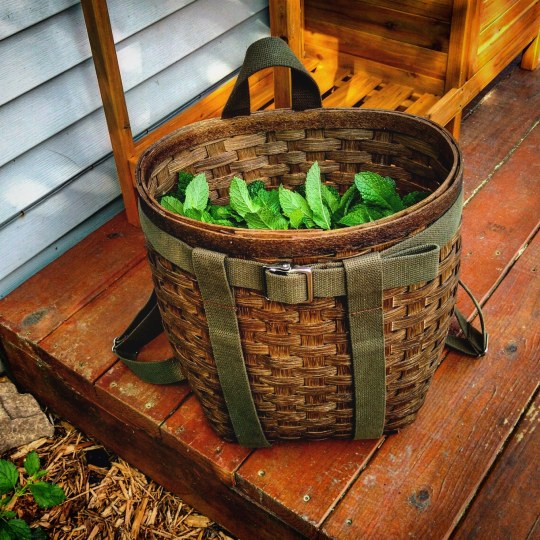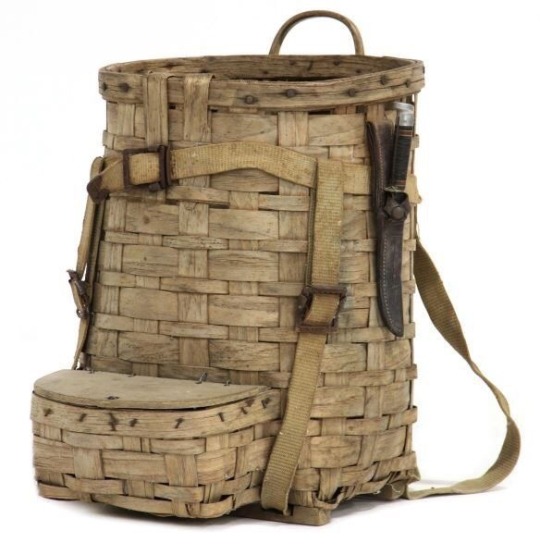Text
Ozark ABC’s Explained - Part IV
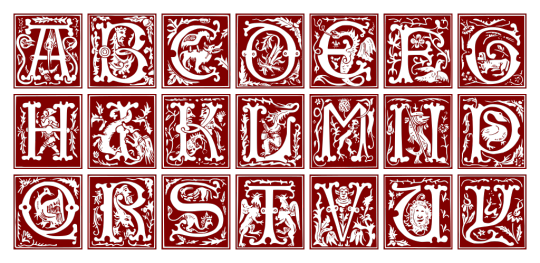
M is for Moon, track it at night –
Keeping up with the phases of the moon is an essential part of Ozark folk healing and magic. Each stage has a different part to play in the work being done. A waxing moon is always used for when you want something to grow, take for instance making a good luck charm when the moon is waxing so that as the moon grows, so too will your luck. Likewise, a waning moon is for whenever you want something to diminish or rot away. Work for healing sickness and charming warts is almost always done during the waning moon. The new moon is for adding a little extra power to anything new that your starting and the full moon is for coming to fruition. The full moon is also especially useful for dream divination and working with the spirit world.
N is for Needle, a doll for your spite –
The Ozark spite doll was made famous by folklorist Vance Randolph who published a photo of an old “granny witch” and her spite doll in an article in Life magazine back in the Thirties. A spite doll is a physical representation of your enemy and can be made from almost anything. String, wax, cloth, cornhusks, apples, carrots, branching plants, and a lot more have all been used in making a spite doll. Most often, some of your enemy’s hair or nail clippings will be put somewhere into the doll, thereby connecting it sympathetically to the person themselves. Then the doll will be manipulated in some way. Unlike Hollywood depictions of the “voodoo doll,” needles aren’t usually used for poking a victim but instead for attaching other items like charms or curses to the body of the doll. Nails are also sometimes used for this same purpose. By connecting these items to the spite doll, you are magically connecting them to the person you’re working on.
O is for Oak, protected from thunder –
There’s a folk belief in the Ozarks that an oak tree is protected from lightning strikes. I can personally say that they aren’t, but this notion goes much deeper than just being an old anecdote. The mighty oak, because of its size and strength, has long been associated with the planetary sign of Jupiter. He is also called Zeus, king of the gods and master of lightning. Parts from the oak tree, especially the acorns, have been used in the Ozarks for bringing in that aspect of power and strength. Acorns can be added to charm bags for protection, tied around a patient’s neck to bring them strength, or carried in a pocket for good luck.
P is for Pawpaw, a witch-tree and wonder –
The pawpaw (Asimina triloba) is an amazing native fruit. It tastes like a cross between a banana and pineapple and has nourished the Ozark people for at least a couple centuries. Both pawpaw and sassafras are known as “witch trees” because they attract the swallowtail butterfly, whose caterpillars love munching on these specific leaves. During certain times of the year, you might see a tree full of these beautiful blue and yellow butterflies. In Ozark folklore, the butterfly is sometimes seen as the embodiment of a departed soul. So, a tree that attracts these spirits is naturally looked at with some suspicion. For the healer, though, these trees can be used to take sickness and evil off their patients, better perhaps than any other trees in the forest. For example, a healer might take their patient out to a pawpaw tree, put their back against the bark, then wrap some string three times loosely around their chest and the trunk of the tree. Then they lower their patient out of the loop of string and knot it tight against the trunk, thereby sealing the curse or sickness there on the spot.
84 notes
·
View notes
Text
*releases pack of dads into home depot* go……be free
935K notes
·
View notes
Text
I often wonder about the possibility of running an old school tavern is a post collapse world. Obviously in a rural area.
220 notes
·
View notes
Text
So I just learned something that pisses me off.
Y’know quinoa? The ~magical~ health food that has become so popular in the US that a centuries-long tradition of local, sustainable, multi-crop farming is being uprooted to mass-produce it for the global market? Potentially affecting food stability and definitely effecting environmental stability across the region?
Ok, cool.
Y’know Lamb’s Quarter? A common weed throughout the continental US, tolerant of a wide variety of soil conditions including the nutrient-poor and compacted soils common in cities, to the point where it thrives in empty lots?
These plants are close relatives, and produce extremely similar seeds. Lamb’s quarter could easily be grown across the US, in people’s backyard and community gardens, as a low-cost and local alternative to quinoa with no sketchy geopolitical impacts. You literally don’t have to nurture it at all, it’s a goddamn weed, it’ll be fine. Put it where your lawn was, it’ll probably grow better than the grass did. AND you can eat the leaves - they taste almost exactly like spinach.
This just… drives home, again, that a huge part of the appeal of “superfoods” is the sense of the exotic. For whatever nutritional benefits quinoa does have, the marketing strategy is still driven by an undercurrent of orientalism. You too could eat this food, grown laboriously by farmers in the remote Andes mountains! You too could grow strong on the staple crop that has sustained them for centuries! And, y’know, destroy that stable food system in the process. Or you could eat this near-identical plant you found in your backyard.
49K notes
·
View notes
Text
Do you ever lie awake wondering how the heck Gimli knows what a nervous system is
197K notes
·
View notes
Text
Ozarks ABC’s Explained - Part III

I is for Ink, pokeberry is swell –
A common ink in the old Ozarks was made from the berries of pokeweed (Phytolacca americana), which makes a deep purple ink that fades brown over time. It’s said that Power Doctors and witches alike use pokeberry ink to write their charms and amulets, believing the plant imparts its own power of healing or harming to the work.
J is for Jaybird, servant of hell –
The Ozarks has many folk beliefs surrounding certain animals. One in particular says that the common Blue Jay, or jaybird, is a known servant of the Devil himself. It’s said that if you see a jaybird gathering sticks on a Friday, he’s helping to stoke the fires of Hell.
K is for Knife, to shave off a hex –
Folk healing in the Ozarks often repurposes common household objects to perform magical acts. A knife, for example, can be used to magical cut or shave off an illness or curse off the body of an afflicted individual. Axes are sometimes used in the same way, as are brooms, used not to cut but to sweep off sickness and evil.
L is for Luck, two nails in an X –
A simple good luck amulet can be made by tying two new nails into an X or a cross then wearing it on a string or carrying it in your pocket. Some claim a used coffin nail (that is, a nail that’s been used to seal a coffin shut, often very difficult to obtain) works better than a new nail.
196 notes
·
View notes
Text
Ozark ABC’s Explained - Part II
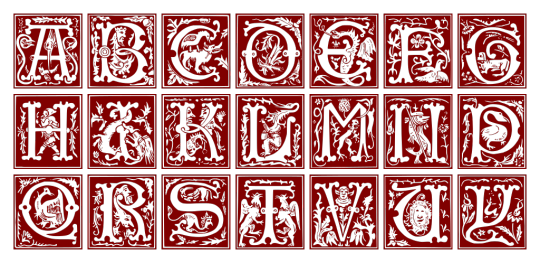
E is for Egg, to suck out the sick –
Common across folk traditions from several cultures, eggs are often used as a magical container for illness or evil. In the Ozarks, the idea is that as the egg is passed along a person’s body it will suck out anything that might be troubling the patient. The egg is then destroyed, usually by throwing it in a river or smashing it against a tree, thereby nullifying the evil forces contained inside. On rare occasions, as with curanderismo, the healer might crack the egg into a glass of water after passing it over their patient’s body. They will then look for certain signs about how serious the sickness might be or what witch might have sent it.
F is for Fever, cured with a stick –
An Ozark method for magically curing a fever involves a healer taking three sticks, usually from the spicebush (Lindera benzoin), common elm, or witch hazel (Hamamelis vernalis) and passing each stick across the forehead of the one with the fever with the words, “Spirit of the sick, pass into this stick!” After each stick has touched the forehead they are brought together and broken then sometimes tossed into a river so as to carry the fever away or put into a jug of cold spring water to sympathetically chill the fever.
G is for Granny, for praying and birth –
The Granny Woman was an important subclass of healer in the Ozarks. She was responsible for all things to do with “female complaints” as there was at one time a strict taboo against men healing women. Even today amongst old folks there’s still an uneasiness about a male healer doing any work for a woman, even if they’re family. The Granny Woman was a combination of herbalist, midwife, and magical healer. She not only knew what plants to use when a birthing is going wrong, but also the specialized prayers and rituals to help calm her patient down. The Granny Woman is almost always an older woman who has had children herself. Often it’s a widow who is guided toward the work.
H is for Haint, a ghost from the earth –
The word “haint” has its origins with “haunt” and is another word for a ghost. Haints are almost always trickster spirits or poltergeists, who use their afterlife to annoy or harm the living. While kindly spirits are often the subject of Ozark folktales, they’re never called haints. This seems to only be used with those wandering or lingering sorts who are bent on causing trouble.
64 notes
·
View notes
Text
Ozark ABC’s Explained - Part I

A is for Asafetida, hung in a sack –
Asafetida (Ferula assa-foetida) is a pungent plant known for its noxious odor that has been described as a mix of rotten garlic and onions. It’s used frequently in recipes throughout Southeast Asia where the aroma is nullified through cooking and leaves behind a very pleasant, savory taste. Because of it’s strong smell, asafetida, or asafetidy as it is sometimes called in the Ozarks, is said to be able to magically ward off evil by choking it. The same theory is used for other strong odors like onion and sulfur, both of which are also used in warding off illness and evil. In the Ozarks, asafetida root is hung in bags to ward of illness, especially with children. It’s also burned in a hot skillet then wafted through the house to drive away malign witchcraft and hexes.
B is for Booger, don’t turn your back –
The word booger comes from the same root as bogey, as in the bogeyman. A booger is a particular kind of Ozark cryptid. Generally speaking, a booger is described as an all-black animal with red eyes and unusually long life. They are also known for their violence towards the innocent. There are many types of boogers, depending on which animal is seen. For instance, there are commonly booger dogs, cats, owls, rabbits, wolves, coyotes, possums, and even turkeys, but in theory, a booger can take the form of any natural animal. There are several theories about where boogers come from. Some say they are a monstrosity of their own, others that they are really the animal form of a witch skilled in shapeshifting. Either way, the booger is terrifying to behold and nearly impossible to kill save for a silver bullet to the heart.
C is for Cross, sewn on a bag –
The cross is an important symbol of protection and healing in the Ozarks. Stemming from the hillfolk connection to Christianity, it’s still used amongst folk magicians and healers today, even those not affiliated with the religion. A quick protection bag can be made from a buckeye nut dropped into a white cloth bag tied closed with three knots, then a cross is sewn on the bag in blue thread and the whole thing is carried in the pocket.
D is for Dishtowel, milked by a hag –
There’s an old folk belief in the Ozarks, traced back to European sources, that when a witch needs milk they need only say a certain curse over their neighbor’s cow then go home, toss a dishtowel over a hook on the wall, and milk it like an udder. In no time milk will start to flow into a bowl or bucket. Most of the folktales relate that the neighbor will get wise to the witch’s curse when they see their cow’s udders shrinking fast but no milk is produced. It’s said you can break the witch’s connection by dropping a red-hot horseshoe into some of the milk, or taking a cupful into the house, heating it to boiling on the stove, then whipping it with a bundle of elm or witch hazel sticks. These days few people have cows anymore. I wonder if with the same technique you could drain the milk bottled in someone’s fridge? Or, more importantly, does the curse work on milk alternatives? An endless supply of almond milk is indeed a tempting thought.
105 notes
·
View notes
Text
Ozark ABC’s

Learn your Ozark folklore and magic with this simple Alphabet! Stumped over some of the letters? Don’t worry, commentary to come in a future article!
A is for Asafetida, hung in a sack
B is for Booger, don’t turn your back
C is for Cross, sewn on a bag
D is for Dishtowel, milked by a hag
E is for Egg, to suck out the sick
F is for Fever, cured with a stick
G is for Granny, for praying and birth
H is for Haint, a ghost from the earth
I is for Ink, pokeberry is swell
J is for Jaybird, servant of hell
K is for Knife, to shave off a hex
L is for Luck, two nails in an X
M is for Moon, track it at night
N is for Needle, a doll for your spite
O is for Oak, protected from thunder
P is for Pawpaw, a witch-tree and wonder
Q is for Quilting, magic that’s sewn
R is for Rattlesnake, a king on his own
S is for String, tie your ills to a tree
T is for Tobacco, for a lock it’s a key
U is for Urine, bottled then buried
V is for Vetch, lucky when carried
W is for Wraith, a ghost with your form
X is for X, to ward off a storm
Y is for Yarb, a cure from the wood
Z is for Zodiac, for planting and good
129 notes
·
View notes
Photo

Love these fairy tale treehouses.


This one is called the “Higgeldy” by it’s owner.

It was inspired by a bird’s nest. Look at the unusual lighting fixture.
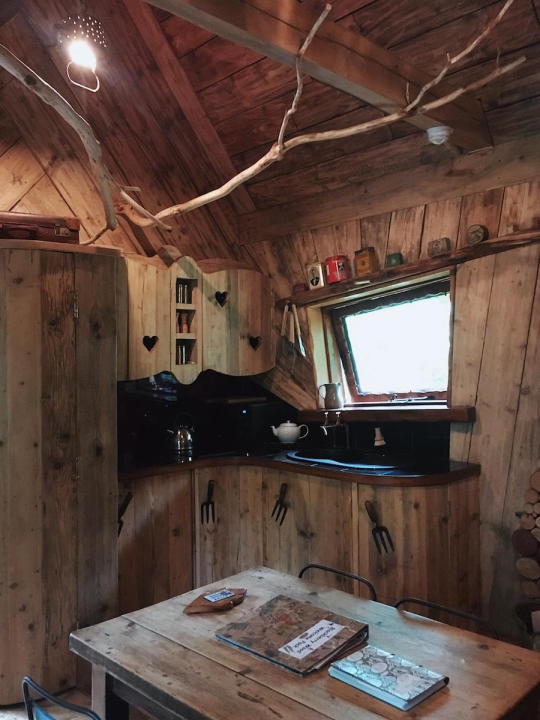
Lovely corner kitchen with black counter & backsplash. Love the branch above.


Cozy bed, perfect for reading.

Relaxing nook overlooking the forest.
http://www.ellieandco.co.uk
3K notes
·
View notes
Text
Leather boots can last a lifetime depending on how the quality and how they're used, and can be repaired and resoled multiple times with good maintenance. PLASTIC synthetics last maybe a year or two and are pretty much destined for a landfill/the ocean.
Shearing sheep is pretty much necessary for the sheep's survival since we've bread them for this purpose for millenna and with good grazing practices can both feed from and nourish soils, while cotton created the Dust Bowl.
To this day we have yet to find materials as thermally efficient as down and fur to keep people warm in the coldest of climates, where coincidentally enough native populations eat almost entirely animal based diets and get 100% of their essential nutrients from animal products. Research has actually found that overall health has DECREASED in these groups of people when they abandoned more traditional food sources in favor of a more standard western diet.
Repeat after me:
- Veganism is not affordable
- Veganism is not cruelty free
- Veganism is not the best choice for everyone
341K notes
·
View notes
Text

7 roosters, 1 hen, and 2 beautiful working dogs
1 note
·
View note
Link
This is not exactly relevant to the article, but you have to see the scene late in the film where John Hume (the rhino breeder) is talking to Born Free Foundation about legalizing rhino horn trade.
It is hair-tearingly frustrating.
Animal rights activists - who I still like to call “anti-animal”, because they have only heart for animals, but they don’t want to do anything to actually help them.
They are against zoos, they are against breeding, they are against conservation-based legal hunting, they are against everything which involves the animals being touched or handled or “exploited” by humans in any way.
That is impossible. That is not the world we live in. In today’s modern world, the only way to solve an issue is to find a way for people to make big money on a solution. The only way.
They are even, as that meeting showed, against animals being kept in huge, open-range farms, to have the horn removed painlessly every two years, even if that will save the species.
It’s the “no, not that” meme.
Animal rights: We have to save the animals!
Zoos: We can breed them in zoological institutions to keep a gene pool for future release, and raise money through zoos to help wild populations.
AR: No, not that.
Hunters: We can let hunters spend insane amounts of money to hunt a select few animals that are no longer breeding, and let the money go back to buying more land for animals, and funding anti-poaching.
AR: No, not that.
Hume: We can mass-produce rhinos in vast, natural landscapes, harvest the horns painlessly and keep the animals alive, selling the horns for millions of dollars, which will keep the rhino alive.
AR: No, not that.
Zoos, hunters, and Hume: THEN WHAT DO YOU WANT?! Suggest SOMETHING that will actually make a difference!
AR: *Crickets*
They are all about feels, hugs and talk, and meanwhile, they will love these animals to extinction, by banning everything that has a snowball’s chance in hell at saving them.
This has been exhibit #35827754 on “Why Animal Rights Activists Must Never Be Allowed To Decide On Animal Welfare Or Conservation Matters, Like Ever”
8K notes
·
View notes
Text
A disturbing amount of things have become single use in the camping community.
112 notes
·
View notes
